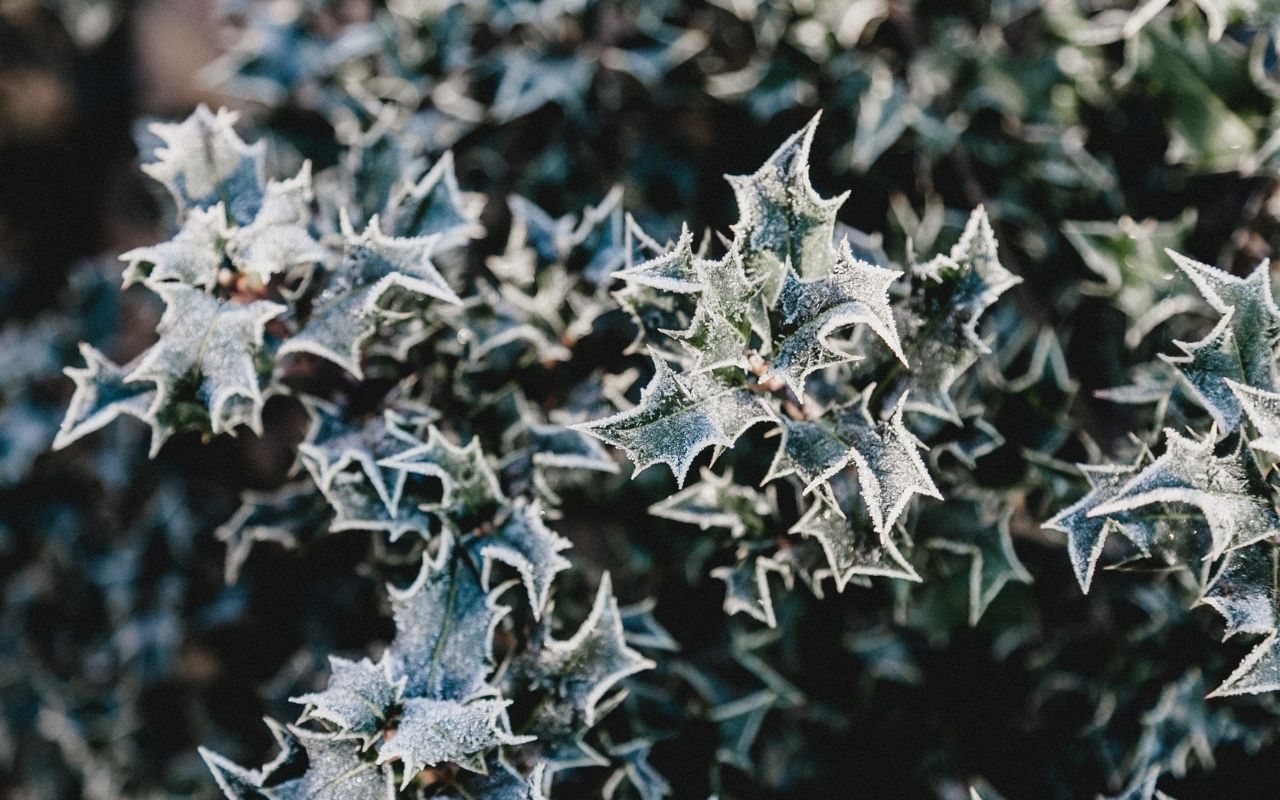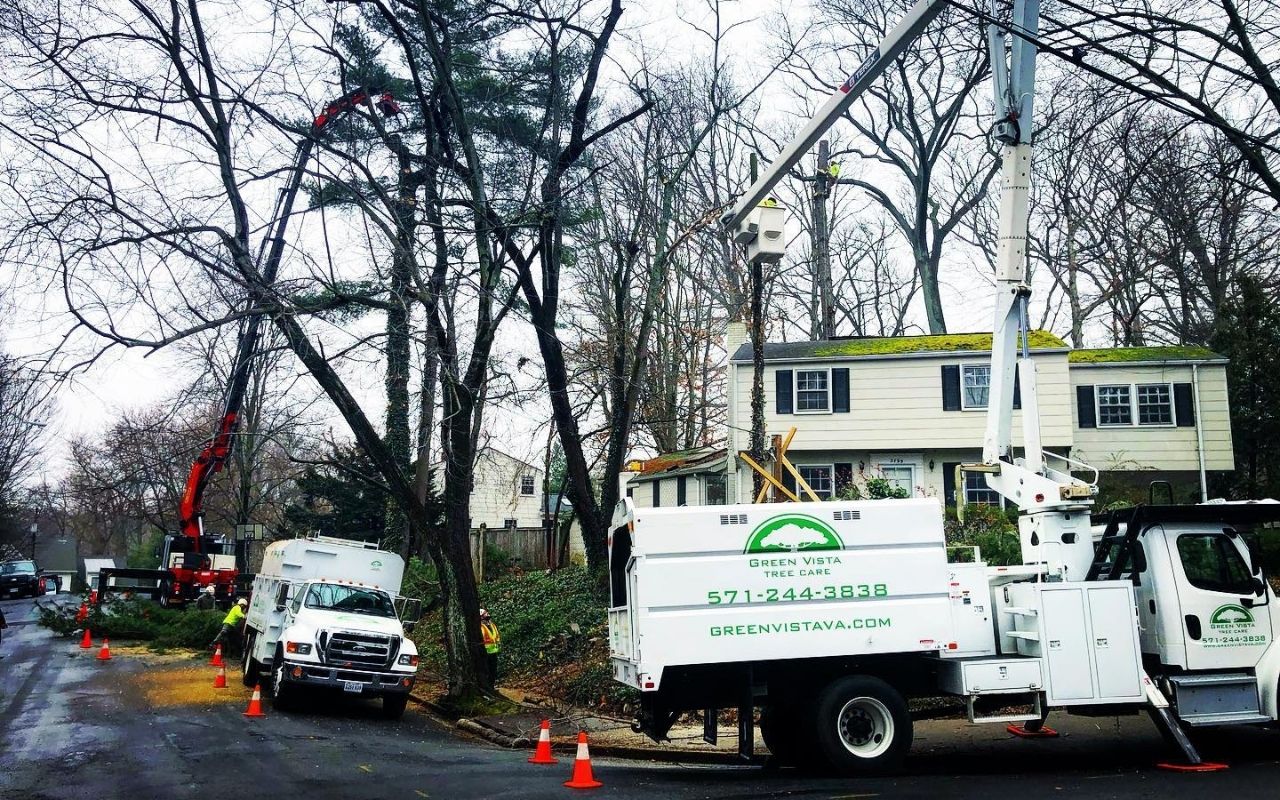Northern Virginia winters can be hard on all of us, and that includes your trees and shrubs. While we can stay cozy indoors or add additional layers when we venture outside, your trees and shrubs are left on their own to endure winter’s freezing temperatures. If you’re worried about your valuable garden trees and shrubs surviving winter’s worst, we’ve got some tips on how to protect trees and other plants before winter arrives.
Winter protection for valuable plants and trees is especially important if they’re growing in areas where they can be affected by road salt.
For more helpful tips to protect your trees this winter, see these articles:
- How to Avoid Salt & Ice Melt Damage to Your Trees & Plants
- How to Protect Your Trees From Winter Sunscald Damage
- How to Help Trees Recover From Ice & Snow Damage
Get Ready Before Winter Arrives
What you do before the first snow flurry or freezing rainstorm can make all the difference to how well your trees and shrubs survive the coming winter. All it takes is a few simple steps to get ready for winter weather. Just be sure to do them before you even put any plant protection measures in place.
Inspect Your Trees
Your winter preparations should start with a thorough inspection of your property. Look for any tree or branch that could become a hazard, as well as any tree limbs that encroach on power lines. The last thing you or your neighbors want is to lose power during a winter storm!
Not sure what to look for when you’re looking at your trees? We offer complete tree care consultations and inspections to look for potential hazards and explain why those trees may create winter problems.
Remove Potential Hazards
Depending on the size and location of hazardous branches, you may want to remove them yourself.
Before you do, read our reasons why most tree pruning should be left to professionals.
Make a note of all oversized, unbalanced, or visibly damaged tree limbs that could fall victim to winter storms, and consider having them removed while the weather is still mild. This simple preventive measure can save you time, money, and comfort this winter.
Add Mulch and Compost
If you haven’t already done so, add compost and mulch to your garden before winter sets in. Compost will dissolve into your soil over the winter and bond to soil particles. Enriching the soil this way will provide nutrients for your trees’ and shrubs’ roots to find when they emerge from dormancy. Organic mulch will break down into your soil too, but it also makes an insulating blanket over your soil’s surface. This protects your tree’s roots from winter’s extreme temperatures and will ensure its spring growth will be as vigorous as possible.
Be Ready to Keep Watering
If Northern Virginia experiences dry or warm periods during the winter, our trees and shrubs may need additional irrigation. If the ground is clear of snow cover and dry, water thoroughly. As long as the ground isn’t frozen, plants can take up moisture to keep them hydrated through the winter.
Keep a garden hose ready to provide supplemental irrigation when needed (drain it, coil it up, and store it in a dry location when it’s not being used).
For details, see this article on how to keep your plants hydrated during winter.

Some broadleaf evergreens, such as holly, benefit from anti-desiccant sprays before the winter to prevent the leaves from drying out.
Put Tree & Shrub Protection in Place
Once you’ve got the basic winter preparations in place, there are some additional measures to consider. Depending on the size and location of your property, we recommend the following ways to protect your trees and shrubs from severe winter weather.
Support Shrubs & Small Multi-Stemmed Trees
Large shrubs and smaller multi-stemmed trees are susceptible to breakage from snow and ice loads. To prevent them from breaking apart, install temporary rope, cable, or twine supports to hold the stems closer together. Don’t forget to remove these temporary supports in the spring!
Spray Broadleaf Evergreens With Anti-Desiccant
Anti-desiccants, also called anti-transpirants, are surface sprays that help preserve evergreen foliage from excessive winter drying. Freezing winter weather can damage evergreen foliage, especially in combination with road salt applications and drying winds.
Anti-desiccant sprays are applied only to broadleaf and coniferous evergreens such as:
- Holly (Ilex species)
- Rhododendron and azalea
- Laurel(Prunus laurocerasus)
- Japanese pieris(Pieris japonica)
- Yew (Taxus baccata)
- Pine (Pinus species)
- Arborvitae (Thuja occidentalis)
Apply anti-desiccants before the soil freezes when the weather is clear, still, and cool, with no rain predicted. You don’t want the foliage to be wet when spraying it with an anti-desiccant or it won’t stick. Windy weather will make it impossible to thoroughly cover all leaf surfaces, leaving plants vulnerable to winter desiccation. And you don’t want the rain to wash off what you’ve just sprayed.
Because anti-desiccants are meant to be temporary, they degrade naturally in the sun and rain. Plan to reapply during the winter as needed.
Set Up Frames to Protect Shrubs from Heavy Snow Loads
Build an A-frame over plantings and shrubs near the house. When snow or icicles fall off the roof, these simple frames will shield your plants from the impact.
If you have any scrap plywood or planks, this is a great way to use them. If not, you can buy rough plywood (not particle board or MDF!) at your local big-box store or lumber yard. Cut the pieces so they form an A over the shrub. You can either screw the pieces together at the top or install a couple of old hinges so you can fold the frame away to store until next year.
Get Out the Frost Cloth
Frost protection cloth, sometimes called a frost blanket, is a light-weight, non-woven plastic fabric that you drape over your plants to protect them from winter winds and damage. The cloth allows a certain amount of sunlight to reach your plants and, if perforated, also allows air movement.
You can cut the cloth to size and tie it around your shrubs and small trees. You can also staple it to a frame around your plants and lift it when temperatures warm during the day. While snow may accumulate atop the cloth it’s easy to shake off.
Wrapped evergreens will lose less moisture when protected from winter winds, so they’re less likely to become dehydrated and brown.
Once temperatures rise enough and freezes are not forecast, remove your fabric and store it for next year.
Wrap Shrubs & Small Trees
Burlap wraps are similar to frost blankets and are wrapped around shrubs, small trees, and tree trunks to protect them from freezing winter winds. Burlap is woven and allows light to reach plants’ foliage. Because burlap is made from jute and other natural fibers, it breathes readily and can be wrapped around thin or delicate bark to protect it from winter sunburn caused by excessive glare from the snow. And because it is made from plant fibers, it is both inexpensive and biodegradable. When your burlap wears out, it can go in your compost or green waste recycling bin.
For both types of wraps, be sure that you don’t leave gaps, especially at ground level. Despite winter temperatures, it is soil that retains the most heat, as underground temperatures remain warmer and more regulated than air temperatures. Ensuring that your fabric is at ground level also ensures that there is a barrier to protect both your plants and your soil from road salt spray, which can burn foliage and surface roots. Always pin or tie your frost covers securely to prevent them from blowing off in high winds.
Set Up Snow Houses
A snow house is a pre-fabricated cover that opens like a tent and is placed over shrubs. It provides similar protection to wraps but is easier to set up. If your snow house is made from plastic, make sure that it is perforated to allow air to move through it so that moisture does not accumulate on foliage. Moisture that can’t evaporate when daytime temperatures rise can encourage fungal growth and can freeze on leaves if temperatures then drop very low.
Need a Hand Before Winter Arrives?
If you need a hand with winter garden and tree care, give us a call. Our crews work year-round, except during the most extreme weather and temperatures. We’re always here to help you and your plants prepare for, survive, and recover from winter weather.
Get helpful tips, local news, inspiring stories, and more delivered right to your inbox every month. Don't miss another issue - join today!






